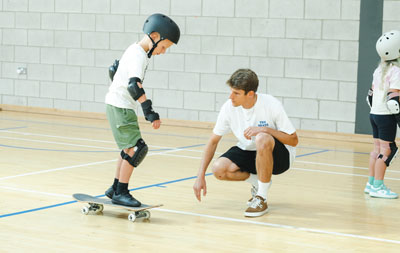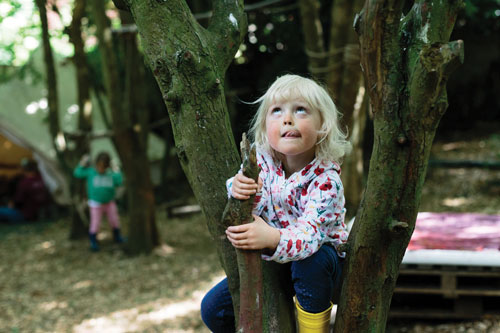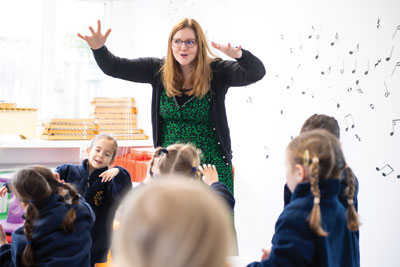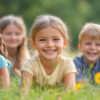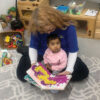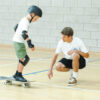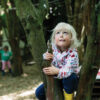
by Jessica.Musgrove
Burgess Hill Girls
The transition from prep to senior school represents one of the most significant educational milestones in a young person’s life. This period of change brings exciting opportunities alongside inevitable challenges.
A good senior school will aim to make this transition as seamless as possible, offering a supportive environment where students can flourish academically and personally. Whether your son or daughter is feeling nervous or eager about this next step, thoughtful preparation makes all the difference in ensuring a smooth and successful transition.
Understanding the transition
The shift to senior school involves much more than simply changing buildings or uniforms. Academically, pupils experience more structure with deeper subject-specific studies and heightened expectations for independent learning. While primary school may have emphasised broad knowledge acquisition, the senior school curriculum develops more sophisticated critical thinking and analytical skills.
Equally important is recognising the social and emotional journey ahead. Schools understand the importance of creating a nurturing community where new pupils integrate quickly and confidently. Experienced pastoral teams understand that navigating this social recalibration can be just as challenging as adapting to increased academic demands.
Developing essential study skills
The jump to senior school often reveals gaps in study skills that may not have been apparent previously. It’s important to support students to integrate effective time management, note-taking and revision techniques into their learning from day one. Most schools offer organisational tools like planners and digital resources to help pupils establish productive habits from the outset.
Head of Academic Progress at Burgess Hill Girls, Rohaise Flint, comments”The students who thrive most quickly are those who develop systematic approaches to their studies early on. Purpose-designed study spaces and consistent homework routines create an environment where students can reach their full potential.”
Goal setting for success
Rohaise Flint recommends that pupils establish both short-term and long-term goals. This practise not only boosts motivation but also helps pupils maintain perspective when challenges arise. Whether aiming for certain grades or developing greater confidence in particular subjects, the school’s individualised approach ensures every student receives the guidance they need to succeed.
Extracurricular engagement
Joining clubs, sports, arts programmes and societies are essential opportunities for social integration, skills development and personal discovery. Pupils who engage beyond the classroom consistently report a more fulfilling and balanced school experience.
Good schools like to encourage new pupils to try several activities during their first term before committing to those that most interest them. This exploration period allows them to discover new passions and connect with peers who share similar interests, all within a supportive community.
Building Resilience
Senior school inevitably brings new pressures – academic challenges, social complexities and sometimes, disappointments. At our school, developing resilience is central to its ethos. The school supports students in managing stress through regular physical activity, mindfulness practises, wellbeing days and ensuring adequate rest and recreation.
The pastoral team facilitates open conversations about challenges, normalising the difficulties of transition. Students are reminded that setbacks are natural and often lead to greater growth and self-awareness when approached constructively – a philosophy that prepares them not just for school but for life.
Nurturing social connections
Making new friends while maintaining existing relationships is one of the most important aspects of the transition. Our school has a house system, team activities and collaborative projects with the local community, each providing natural opportunities for social connection. The parent association organises informal gatherings with classmates and a vibrant calendar of school social events ensures every girl feels part of the community from day one.
Digital and resource readiness
At our school, we utilise state-of-the-art digital platforms for assignments, timetables and communications. Beginning September 2025, the school is implementing a 1-to-1 leased device programme, empowering students with flexibility in their learning environment while ensuring seamless access to all academic materials.
The parent’s role
As parents, striking the right balance between supportive involvement and encouraging independence can be challenging. At our school we partner with families through regular communication and parent workshops that provide valuable insights into supporting this transition. Also, an open-door policy ensures parents can always reach staff when guidance is needed.
Student testimonial from Charlotte W. Year 8
“I was incredibly nervous about moving up to senior school last year. After seven years at my small prep school, everything seemed so much bigger and more intimidating at first. But looking back, I can’t believe I was ever worried! During the first week, my form tutor organised these brilliant icebreaker activities that helped me connect with everyone quickly. The buddy system meant I had a peer who checked in regularly, which made navigating the school and new routines so much easier. What surprised me most was how quickly the teachers got to know me personally. My English teacher noticed I was quiet but had strong written ideas, so she encouraged me to join the debating club, which has completely boosted my confidence. The transition was an adjustment – I had to get used to moving between different classrooms and managing more homework – but the organisation skills we learned in the first term made a huge difference. Now I’m helping with this year’s new students, and it’s amazing to see them settling in just like I did. Coming to BHG has been the best decision ever – I’ve discovered talents I never knew I had!”
We believe a successful transition to senior school balances rigorous academic preparation with compassionate emotional support and engaging extracurricular opportunities. Our 120-year tradition of educational excellence, combined with its forward-thinking approach, creates an environment where every girl can thrive.
You are invited to experience the difference for yourself, with places available in both prep and senior school. Contact the admissions team today to arrange a visit and discover how the school transforms potential challenges into opportunities for remarkable growth and achievement.
To find out more about Burgess Hill Girls, please visit www.burgesshillgirls.com

